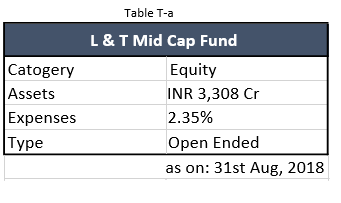What is Data Science?
Data Science starts from mining data from various sources, cleaning it and comprehending the interactions between various entities. The goal is usually to build predictive models, built around the science of predictive analytics, which is a product of several tested and proven algorithms aimed at giving accurate results.
What is Business Analytics?
Data Science is widely used to solve problems related to businesses, it finds its application in business intelligence. Giving rise to the widely popular term ‘Business Analytics’. Its application ranges from finding the right audience for maximum sales conversion to ordering the optimum quantity of raw materials in a manufacturing unit. It fills information gaps that were previously obtained through less scientific methods.
We are being watched!
We are exposed to these algorithms in the digital space continuously. The videos of our preference are picked from the artists we like to listen to, the hobbies we spend our weekends on & more. The products that are advertised to us are being carefully designed by E-Markets with the intention of up selling and cross-selling.
Business Intelligence
We live in the era of information, bombarding audiences with useless & repetitive information can be a waste of investment. Although the success of several companies such as Old Spice, Coca Cola & Oreo may be attributed to bombarding advertisements with the same theme and message over several decades on TV, the same has proven to be less effective and efficient. Analytics helps reach the target audience that have the potential to convert for sales.
While advertisement is an obvious line to use analytics, it is a lesser known that it is also used in many other industries. Such as pharmaceuticals to come up with the right cocktail bled to fit the nation’s law, cure diseases and the most profitable concoction. Bankers use it to predict the possibility of default of loans and the movement of stocks. Manufacturing units use it for material optimization and logistics. The government uses it to better implement social welfare schemes. All in all no industry is immune to the necessity of analytics.
The use of Technology in Data Science & Business Analytics
One of the most important attributes of the data science is the extensive use of technology. Human intervention is limited, computers take charge of repetitive activates. Furthermore, there are algorithms that are designed to make the models more efficient as and when it accumulates more data inputs. Analysts find their role in techniques of data mining, cleaning, application of statistical tools and the logical consistency in the interactions of various entities.
Skills required for a Data Scientist or a Data Science Analyst
Skills required for a data scientist or a data science analyst are an inquisitive mind, ability to crunch numbers and the interest to build algorithms. Several institutes are now providing training in the science to help professionals upgrade with the wave of change. Masters in data science is among the most sought after courses across the globe.
Data Science for Entrepreneurs
Entrepreneurs need business intelligence through analytics more than anyone. Although a general analysis and queries lead to an understanding of what needs to be produced to establish a successful business, the combination that composes the offering, medium of promotion, the best channel to reach the target audience and integrating a business to its best efficiency needs analytics. Prediction for decision-making with precision stands as the primary need for businesses. Multi-dimensional analysis of the market and competition helps stop businesses from making the wrong decisions. Hence, potentially saving much investment and increasing the rate of successes.
We undertake content writing & Digital Marketing projects, write to us on kusuma@dinnovatehub.com
or
Visit our website: https://www.dinnovatehub.com/marketing.php



